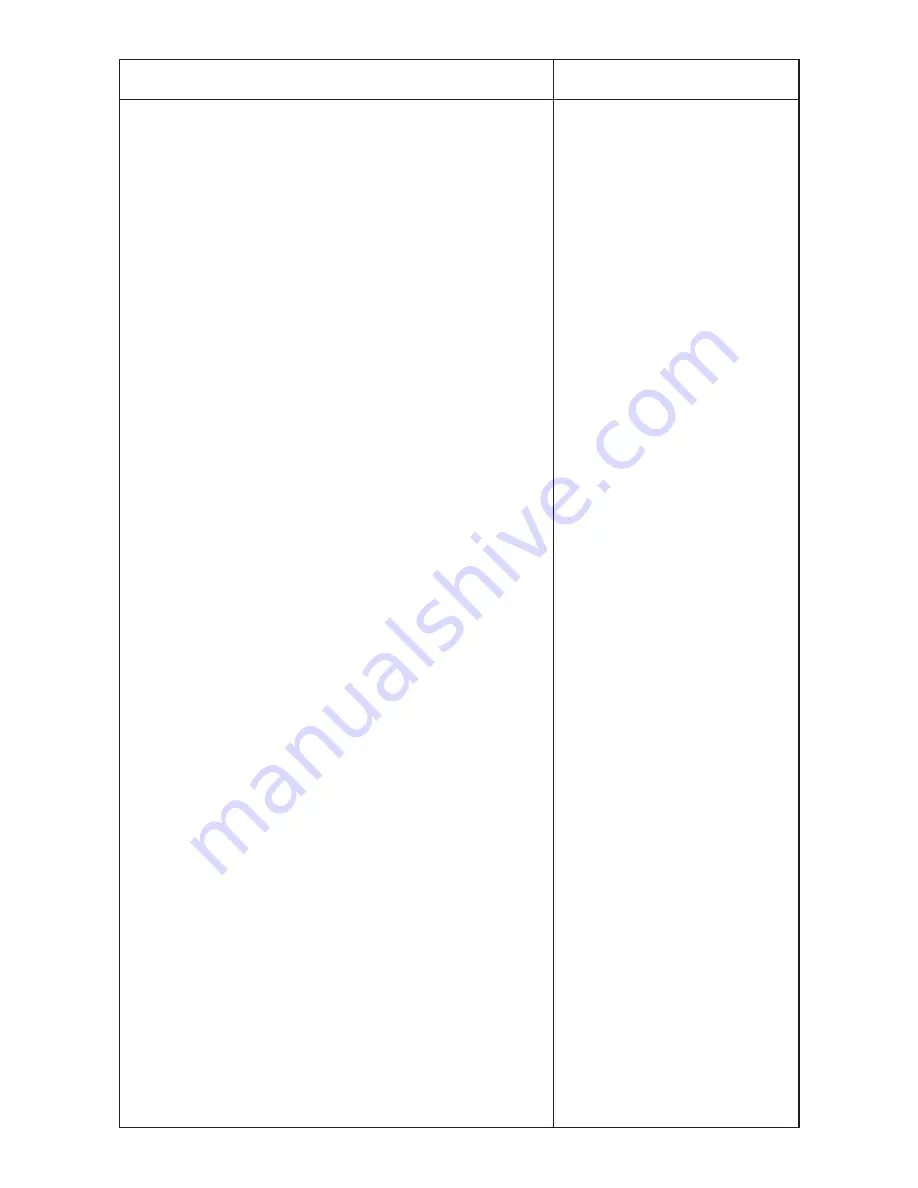
−
53
−
Adjustment Procedures
Results of Improper Adjustment
™
Intermediate constant
1) Make horizontal arm A
1
in the state of temporary tightening,
turn the handwheel and adjust the top feed dog to the position
where it is desired to be constant.
2) At the position, tighten horizontal arm A
1
at the position where
the top feed dog does not move even when the top feed lever
is moved.
3) Loosen horizontal arm C
3
at the position where the top feed
dog does not come in contact with the front or rear of the groove
of the presser even when the pitch of the top feed dog is
maximized. Then adjust the position of the horizontal shaft.
™
Rear constant
1) Make horizontal arm A
1
in the state of temporary tightening,
turn the handwheel and adjust the top feed dog to the most
retarded position.
2) At the position, tighten horizontal arm A
1
at the position where
the top feed dog does not move even when the top feed lever
is moved.
3) Loosen horizontal arm C
3
at the position where the top feed
dog does not come in contact with the front or rear of the groove
of the presser even when the pitch of the top feed dog is
maximized. Then adjust the position of the horizontal shaft.
™
Front constant
1) Make horizontal arm A
1
in the state of temporary tightening,
turn the handwheel and adjust the top feed dog to the most
advanced position.
2) At the position, tighten horizontal arm A
1
at the position where
the top feed dog does not move even when the top feed lever
is moved.
3) Loosen horizontal arm C
3
at the position where the top feed
dog does not come in contact with the front or rear of the groove
of the presser even when the pitch of the top feed dog is
maximized. Then adjust the position of the horizontal shaft.
(Caution) 1. Never loosen horizontal arm B
2
since it
keeps the thrust of the horizontal drive shaft.
2. Set horizontal arm C
3
to the position where
horizontal feed link
4
lightly moves without
play.
3. Provide a clearance of 0.5 mm or more
between the top feed dog and the groove of
the presser when the pitch is maximized.
™
At the time of rear constant, the
lowest point of the top feed dog
is apt to be lowered when
increasing the top feed stroke
(clearance between top feed
a n d b o t t o m f e e d d o g s i s
increased) and there is no effect
for partial shirring. Use the top
feed dog with intermediate
constant or front constant.
™
When the top feed dog is set to
front constant, biting of cloth at
the start of sewing is improved.
However, a few loading is apt to
occur at the overlapped section
of knit fabric
™
If the play between horizontal
arm C
3
and horizontal feed link
4
is large, the return of the top
feed adjusting lever is worsened
and a forcible load is applied to
the components.
Summary of Contents for MO-6000S series
Page 78: ......






























